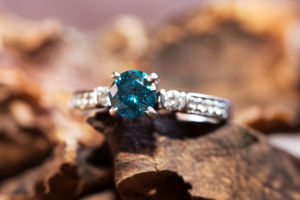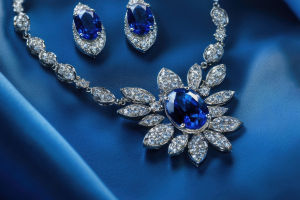Hello, Lykkers! How many skirts do you have in your guardrobe? And why do we tend to buy and wear them? Skirts have remained a symbol of femininity for thousands of years, evolving significantly over time.
From their humble beginnings in ancient civilizations to their status as a powerful fashion statement today, skirts have undergone many transformations.
This article explores the history and cultural significance of skirts throughout the ages, showcasing their role in shaping fashion trends and women's empowerment.
Origins of the Skirt: Ancient Civilizations
The story of the skirt dates back to around 5000 BC in Mesopotamia, where it was worn by both men and women. In these early societies, skirts served as basic garments made from simple fabrics that were wrapped around the body for warmth and protection.
Similarly, ancient Egyptians used similar garments, emphasizing functionality over design. These early skirts were not elaborately designed but provided essential coverage for the people of the time.
The Skirt in Ancient Greece and Rome
In ancient Greece and Rome, the skirt underwent its first major transformation. Greek nobility, including rulers and influential figures, began wearing long, decorated skirts that reached the ankles, often made from fine fabrics and adorned with intricate patterns.
On the other hand, common people wore simpler, shorter versions of the same garment. Roman society, influenced by Greek fashion, adopted similar styles, with a focus on both functionality and aesthetics.
The Skirt as a Status Symbol in the Renaissance
The Renaissance period marked a pivotal point in the evolution of the skirt, especially for women. In the 1500s, the skirt became synonymous with femininity and began to represent social status.
The choice of fabric, design, and decoration signified the wearer’s rank in society. Higher-class women often wore skirts made from luxurious materials, such as silk, embellished with lace, embroidery, and jewels. This marked the start of the skirt’s association with wealth and power, transforming it from a basic garment to a symbol of social standing.
The Crinoline Era and the Voluminous Skirt
In the 19th century, skirts saw a significant increase in volume, thanks to the introduction of crinolines—structures made from hoops or cages that held the skirt out from the body.
These garments gave skirts a bell-like shape, adding a sense of grandeur and drama. This trend reached its peak during the Victorian era, when women’s fashion became synonymous with extreme opulence and formality. Crinolines, while adding dramatic flair, also demonstrated the constraints placed on women’s fashion, as the garments were often uncomfortable and difficult to move in.
The Modern Skirt: A Reflection of Women's Emancipation
The 20th century brought about a dramatic shift in how skirts were perceived and worn.
With the rise of women’s movements advocating for equality and freedom, there was a growing desire for more comfortable and practical clothing. Designers like Coco Chanel played a crucial role in this transformation, introducing shorter skirts and simpler designs that allowed women to move more freely. Chanel’s influence led to the creation of the knee-length skirt, a significant departure from the restrictive garments of the past.
The Miniskirt: A Revolutionary Fashion Statement
The 1960s marked a cultural revolution, and fashion was at the heart of it. The miniskirt, introduced by designers like Mary Quant, became a symbol of defiance and empowerment for women.
This era was marked by a desire for independence, with women embracing bold new styles that challenged traditional norms. The miniskirt, often paired with youthful, carefree designs, became a key part of the social movement for gender equality. It was not just a piece of clothing but a statement of women asserting their rights and rejecting the old-fashioned notion of femininity.
Skirts Today: Diversity and Individuality
Today, skirts come in a wide variety of styles, offering something for everyone. From long flowing skirts to short, playful mini skirts, and from tailored pencil skirts to breezy A-line designs, modern skirts are more diverse than ever.
Fashion designers continue to reinterpret the past, creating new takes on classic styles. Skirts now reflect the individuality of those who wear them, with no singular "right" way to wear them. Today, skirts symbolize freedom of choice and self-expression, allowing individuals to choose garments that best reflect their personality and lifestyle.
The Skirt as a Symbol of Feminism
The skirt has long been associated with femininity, but it also carries a deeper significance as a symbol of empowerment and independence for women.
Throughout history, clothing, especially skirts, has often been used to define gender roles, with women expected to wear garments that emphasized modesty and submission. However, as women's rights movements gained momentum, skirts began to represent more than just traditional femininity.
In the 20th century, especially with the rise of the miniskirt in the 1960s, skirts became a powerful statement of defiance and autonomy. Women who chose to wear skirts were often making a statement about their right to control their bodies, reject societal constraints, and embrace their individuality. Today, the skirt remains an enduring symbol of feminist ideals, representing a woman’s freedom to express herself, choose her clothing, and challenge conventional expectations.
Conclusion: The Enduring Legacy of the Skirt
The skirt has come a long way from its origins as a simple piece of cloth wrapped around the body in ancient times. It has evolved through numerous phases of cultural, social, and political significance, often reflecting the changing roles of women in society. Its enduring appeal speaks to its versatility and timeless charm, ensuring that skirts will remain a staple of fashion for generations to come.


